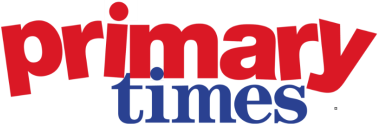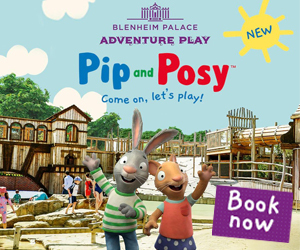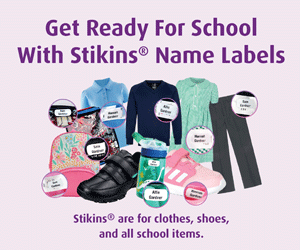Primary Times - the definitive what’s on and where to go family guide of activities and events for children of primary school age. Things to do with your kids during the school holidays including arts and craft activities, music and theatre for children, parties, competitions, days out, and family attractions along with term time drama schools, dance classes, after school clubs and sports activities. Things to do at a place near you!
Martin Bailey: Bringing the curriculum to life
It’s a widely accepted notion that when children are engaged with learning, they’re more enthused by the subject and, in turn, are likely to learn more and learn better. For the children of today, learning opportunities have never been greater or more diverse, due to the constant evolution of technology and education resources. However, with so many options available, how can teachers ensure they’re using the most effective and engaging resources in their classrooms?
At Bett 2017, Martin Bailey, primary school teacher, director of Animate 2 Educate, and Naace board member will speak in the Learn Live Primary arena in a session called ‘Bringing the curriculum to life’, giving educators the chance to take away ideas that can help improve the 21st century classroom and transform learning opportunities for pupils. Here, Martin outlines how technology can help improve learning outcomes and gives examples of the innovative ways it can be used in the classroom…
Many teachers are unaware of the amazing ways in which apps and new technologies can enhance learning, and don’t realise how simple it is to do really creative things with these resources. However, often giving learners the chance to engage with technology not only increases their motivation to learn, but it also gives them the opportunity to develop key skills for their future and today’s workplace, such as collaboration, resilience and problem-solving skills. Therefore, we need teachers to embrace the technology that’s available at our fingertips in their classrooms.
If we take tablets for example, we’re all aware that they have built-in video cameras but often we fail to utilise the potential of this, instead simply using it to take photographs. Why don’t we give pupils the chance to create, use and manipulate video footage or photographs in order to bring the curriculum to life? Classrooms that use the “sage-on-stage” method and use only textbooks are not going to engage generation Z; it’s about thinking of the possibilities available with technology and how pupils can benefit from them, thereby developing skills that are very current and relevant.
Often, it’s the creative opportunities that will help to inspire reluctant writers, English as an additional language (EAL) pupils and children with special educational needs and disabilities (SEND), and enable them to access the curriculum. It’s most likely that they love a subject just as much as any other pupil, but can’t express their understanding in the traditional way. Therefore, technology can often enable them to evidence their progress and give them the chance to engage with learning in a way that might not be possible when using traditional methods.
Green screen videography, stop-motion animation, multimedia presentations and augmented reality are a few contemporary methods teachers can use to bring the classroom to life. Green screen sessions, for example, are a great way of adding an additional dimension to the classroom and help pupils engage with the curriculum in creative and innovative ways. Green screens allow children to travel back in time and visit locations that wouldn’t be possible; they can perform in front of the screens and then use the latest in ‘chroma key’ technology to remove the green background, and change it to represent the historical place they’re studying.
Other green screen sessions that can be used in schools include news bulletins, TV programmes and telling digital stories. With the new computing curriculum outlining the need for children to engage with digital technology, green screen and animation can be used to support this learning and enhance the curriculum.
Likewise, augmented reality is a technology that adds another layer onto reality using computer graphics. For instance, you’ve probably all heard about Pokémon GO. Well, did you know that this uses augmented reality? The app uses a mixture of geo-mapping and overlaid graphics to project digital creatures, otherwise known as Pokémon characters, into reality. This can be applied to learning too, as it provides the opportunity to break the boundaries of the classroom, or even the school day, to open up experiences that would otherwise be impossible.
These may seem very obscure teaching ideas, but in actual fact, with more schools using tablets and iPads, they can be easily applied. It’s about making the most of the technology we have available at our fingertips and realising the potential of these devices.
During my session at Bett, I will discuss the key apps that are essential for the classroom, because with so many apps out there, teachers can often feel bombarded by the sheer number of them. Primary school teachers will be given the chance to learn more about apps, resources and teaching ideas that will interest and stimulate pupils and can be immediately taken back and implemented in the classroom. There are so many options available when it comes to teaching using technology, so my session will outline just how this technology can be used to bring the curriculum to life.
Martin’s session will take place at Bett 2017 in the Learn Live Primary arena on Saturday 28 January at 2.15pm.





